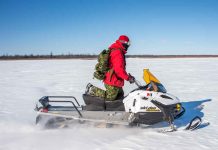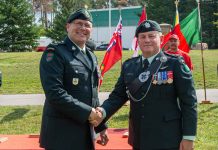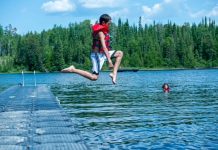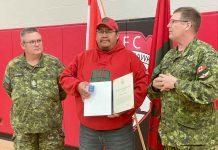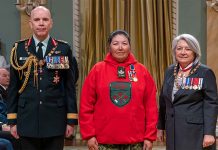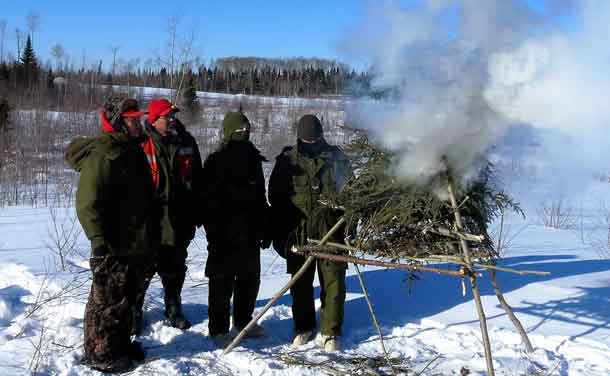

THUNDER BAY – About 900 members of the Canadian Armed Forces are completing the largest winter training exercise of its kind ever held across the Far North of Ontario.
“It’s been a great success,” said Lieutenant-Colonel Matthew Richardson, commanding officer of the 3rd Canadian Ranger Patrol Group. “It’s provided an experience for soldiers from the south, both regular force and reserves, to get to an area of potential operations that many of them have never experienced before in their lives. It has let them train with the Canadian Rangers, interact with the peoples of the First Nations, and prepare to respond to a domestic emergency in the North if they are needed.”
Most of the troops conducted their training in 13 remote Cree, Oji-Cree, and Ojibway communities across the top half of the province, including the coastal areas of James Bay and Hudson Bay. They are being taught by more than 100 Canadian Rangers who live in the communities. The Rangers are part-time reserve soldiers in remote and isolated communities across the Canadian North who use their traditional skills to live and survive on the land.
“The value of this training for the soldiers is that they are getting an experience they would never get anywhere else,” said Lieutenant Joshua Bouthot, a regular army artillery officer. “They’re learning a lot about the Rangers and the First Nation communities up North, how they live day-to-day, and they are getting a lot of survival skills they would not get otherwise. It is a big eye opener for them.
“The Rangers are teaching them how to live off the land, to trap, to fish, how to light a fire to keep themselves warm, and how to build emergency shelters. They are teaching basic survival skills – how to have food, heat, shelter. It is not part of your day-to-day army training.”
The week-long exercise – called Exercise Trillium Response 2016 – is supported by the Royal Canadian Air Force which is transporting troops and equipment as well as conducting aerial surveillance. The RCAF is operating out of the airport at the small northern town of Pickle Lake, which is also the command headquarters for the exercise.
Most of the troops have never been as far north before and many grew up in urban communities.
“I’m a city girl,” said Bombardier Indiana Klaver. “I’ve never been this far north. It’s all new. The ability of the Rangers to live in such extreme conditions is impressive and learning about their culture is interesting. I’ve got to see wildlife I’ve never seen before. They’ve taught us how to snare rabbits and we caught one. I’m from Toronto and I’ve never seen a rabbit before.”
“We enjoy the outdoors,” said Ranger Sergeant Jean Rabbit-Waboose of Fort Hope, an Ojibway community 365 kilometers north of Thunder Bay. “We’ve enjoyed passing on some of our skills to the soldiers. They were very interested in how we set nets under the ice to catch fish. They all participated and wanted to be involved. We prepared a traditional fish meal for them and they ate it all.
“They’d never seen the Northern Lights before and they were amazed by them.”
In Sachigo Lake the Rangers welcomed the troops into their community with a traditional meal on their first night. “Two or three of the Rangers went out and got a moose and a caribou,” Col. Richardson said. “They showed the soldiers how to skin them and butcher them. They also got some ptarmigan and rabbits as well. The soldiers arrived to a traditional feast.”
One day of the exercise was set aside for the troops to interact with their host communities. Soldiers visited schools, met with local inhabitants in community halls, and took advantage of opportunities to buy local handicrafts from local artisans. In Fort Hope, soldiers cut wood to help thaw out the ground for a burial at the cemetery. A fire had to burn for two days before a grave could be dug.
The 13 communities participating in the exercise are Attawapiskat, Eabametoong, Fort Albany, Fort Severn, Kasabonika Lake, Kashechewan, Kingfisher Lake, Kitchenuhmaykoosib, Moose Factory, Muskrat Dam, North Caribou Lake, Peawanuck, Sachigo Lake, and Webequie.
(Sergeant Peter Moon is the public affairs ranger for 3rd Canadian Ranger Patrol Group at Canadian Forces Base Borden.)

